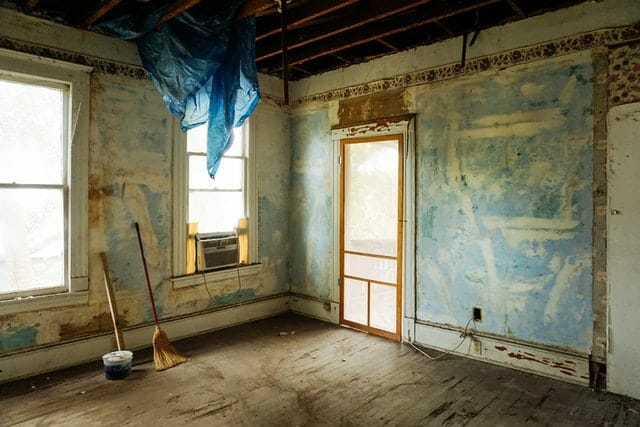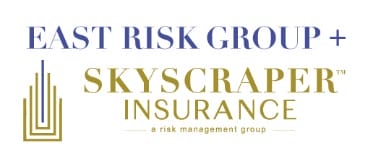Do You Need House Flipping Insurance?
House flipping can be rewarding, but most investors who buy house flips often overlook property insurance. Investors continually prospect, fix and flip with the associated concerns in mind, like purchase price, renovation costs, projected market price, and financing, and other investors after the project are completed.
With these crucial factors taking up their focus, insurance is usually an afterthought as it could be set up in just a few minutes after they close a deal. However, as a real estate investor, you need to know that buying house flips requires a different insurance policy type for a homeowner. Here’s what you need to know about house flipping insurance and how to make it easier.

What is House Flipping?
House flipping is when you buy a distressed property, fix it up, and then resell it for a profit. House flippers usually find these properties via bank short sales or property auctions. Good house flippers know how to invest their money wisely in undervalued properties as they require a lot of work.
Once the undervalued property is fixed, you need to invest in renovations that increase the resale value of the property and attract potential buyers. Here are the potential expenses you should look for:
- Property taxes
- Down payment
- Home inspection fees
- Insurance payments
- Closing costs
- Marketing costs
- Utility costs
- Real estate specialist fees
In the US, house flipping has become very popular over the last few years. In 2020, 7.5% of all home sales were house flips. Pennsylvania currently has the most significant gross return in investment (ROI). In Idaho, on the other hand, investors had it the worst, with a mere 15% ROI (compared to 92% ROI in Pennsylvania).
What is Flipping Insurance?
In buying house flips, you need a different homeowner’s policy type and not just a regular homeowner’s policy. But some insurance companies do not offer this kind of policy because they find fixes and flips are too risky to insure due to several reasons:
- Multiple Investors: A lot of house flipping ventures involve many real estate investors. Insurers find it difficult to carefully analyze risks as they have to deal with many people.
- Different Entity Structure: House-flippers use different entity structures, such as Limited Liability Companies (LLCs), trusts, and other companies designed to lessen the investors’ personal liability. Even though this is a good strategy for investors, it still poses a significant risk for the home insurance company, especially if it has multiple owners.
- Multiple Contractors on Site: Insurers are aware that you have to bring in subcontractors to fix a property, but they do not know whether each person working on renovating the property is licensed. Many fix and flip investors have a “handyman” background or have relatives or friends who could do the job cheaper than a bonded, licensed, and insured contractor. If you decide to employ unlicensed people on the rehab job, it may create an issue with the insurers.
An insurance policy for house flipping protects you and your property from many types of dangers and liabilities that often occur during the flipping. For example, your house could burn down, or a worker could fall. Home insurance for flipping houses covers you in these and other types of situations we will discuss below.
What Type of Insurance Does a House Flipper Need?
Flipping houses need special insurance policies that traditional homeowners’ insurance would not cover. Your standard property insurance protects your personal residence, or auto would likely not provide the type of insurance coverage you need for your house flip business.
House flippers purchased distressed properties that require significant renovations that will stay dormant for periods while the rehabilitation is being completed. Typical insurance providers and homeowners’ policies perceive house-flipping as “high risk.” They are not designed to cover vacant homes or properties that need rehab.
When real estate investors start flipping houses, they need to consider three special types of insurance:
Dwelling Policy
A dwelling policy is designed to cover a vacant property under renovation from any physical damage. It can affect you as a flipper when doing a cosmetic renovation or when the investment property is on the market for sale or looking for a tenant.
For insurers, vacant properties and those under renovation pose a higher risk as they are prone to theft, fire, vandalism, and water damage. Make sure that your representative knows if a cosmetic renovation is going on your property and when is the completion time. At the same time, they assign the right values to the vacant building and renovation value.
Builder’s Risk Policy
A builder’s risk policy can be considered when doing structural renovation and covers direct physical damage to property while the construction is ongoing. Coverage for this policy can extend to materials, equipment, and mixtures used in the renovation project is owned by the policyholder.
A dwelling policy does not cover the renovation materials or part, so it is vital to consider adding the ‘Builder’s risk rider’ to your house flipping insurance policy.
General Liability Umbrella Policy
A General Liability Policy can provide coverage for bodily injury due to slip and fall or wrongful death that happens on the premises. General liability coverage does not extend to the contractor you hire to do the job on site.
When you doubt your coverage, work with your homeowner insurance provider and explain your business intentions so they can customize the proper protection for your property and assets.
What Does House Flipping Insurance Not Cover
Typically, fix and flip insurance doesn’t cover:
- Theft
- Sleet damages
- Snow damages
- Water damages
- Sewer and drain backup
- Earthquakes
- Floods
- Intentional damage
How Much House Flipping Insurance Coverage Do I Need?
You generally have two flip liability insurance options:
- Basic Form Coverage
- Special Form Coverage
Basic Form Coverage
Basic Form provides compensation for the loss listed in the policy coverage, excluding all other causes of damage. Other perils that are not included in Basic Form coverage are sleet or snow, the weight of ice, theft, and water damage like backup sewage and drains. Basic form coverage can save you 25-30%, including exclusions.
Special Form Coverage
Special Form Coverage offers protection for all causes of loss, excluding those listed explicitly in the policy exceptions. The burden of proof is on the insurer to prove that damage was caused by specified exclusion or that coverage is afforded.
In this type of insurance policy, some of the exclusions are sewer & drain backup, sinkhole, earthquake, flood, and intentional damage. However, not all but you can buy some of these from additional endorsements.
You can also choose from two types of settlement methods that can affect your insurance costs and the amount you can recover in the event of damage.
Actual Cash Value
Actual cash value coverage compensates claims depending on the property’s value in its present condition. Actual cash value is computed by getting today’s replacement value, minus the depreciation to account for the property’s age and any wear-and-tear.
Actual cash value may leave you in a difficult state because it may not guarantee that you can recoup all the money that you may need to finish rebuilding the property.
Replacement Cost Value
Replacement cost value coverage pays claims depending on the amount of money needed to replace the damaged or destroyed home with the exact or similar value in today’s market. Bear in mind that the replacement cost value includes the home’s value but not the value of the land.
Generally, you have to obtain enough insurance policies to secure the amount you paid for your home and the amount you invested in its renovation.
However, in the event of a total loss, like losing the entire structure, you may have to entirely rebuild the property at full replacement cost or sell off the lot to another new investor. At this time, you will need enough policies to pay for the replacement of your home or enough coverage to prevent a loss if you have to liquidate everything.
How Much Should An Insurance Policy Cost For My House Flip?
In general, your vacant policy with the builder’s risk rider is around .5 to 1% of the property value per month. For example, a $200,000 policy would cost about $100 to $200 a month. A General Liability Umbrella policy is quite affordable. For a few hundred dollars, you may get $1M worth of coverage.
There are several factors that have an impact on the cost of house flipping insurance, including:
- Geographical location
- The property value
- The level and type of coverage you choose
How to Protect Yourself When Flipping Houses
Besides flipping insurance, there are a few other ways to protect yourself in flipping real estate:
- Deal with financing through an LLC: An LLC protect your personal assets and makes sure you’re not liable if something goes wrong with your property.
- Get an expert real estate team: Fix and flips are risky if done the wrong way. That’s why it’s important to surround yourself with experts who will be able to advise you in the best possible way.
When Should I Get Insurance For My House Flip?
House flipping insurance companies usually suggest not to wait until the last minute to get in touch with your insurance providers. As soon as you get the property under contract, reach out to your insurers to get quotes on your insurance coverage, and choose the best home insurance for flipping houses.
Remember that as soon as you earn ownership of the property, it is your financial responsibility, so as much as possible, you would have to make sure that your property insurance covers unfortunate events that may strike at any time.
House flipping may need a different type of policy many times during the lifetime of the investment house. When the construction is finished, as an investor, you may need a vacant home policy, and when the property is rented, you may need to use a dwelling policy. It is the investor’s responsibility to talk with their insurance company during the process and know the building’s insurance new requirements at a given time.
Finally, house flipping shows a lot of possible liabilities that an insurance provider might not consider. Insurance companies may require the investor to prove that the people that will be working on the property are licensed. When the insurance company learns that unlicensed workers are doing the rehab job, it may not issue you a policy.
Hence, for house flippers with multiple flipping projects a year, they should find these providers to ensure their investment properties are on one schedule and one monthly payment.
All insurance coverage is not created equally, so it is always a good idea to think about what type of house flipping insurance and how much coverage you need for your rehab house to ensure you are not underinsured or overinsured.
What is the 70/30 rule in Flipping?
When buying a property they want to flip, investors need to estimate how much they think the property could sell for after renovation. Then they multiply that amount by 70% and subtract it from the estimated cost of renovating the property.
Why is Insurance for Flipping Houses so Much More Expensive Than Regular Homeowners Insurance?
Flipping houses requires a special insurance policy that the traditional homeowner’s policies won’t cover. This is because properties that are flipped are typically in need of significant renovation. They also sit vacant for months before the flipping is completed, which is considered high risk.
Are you still confused about house flipping insurance, or do you need some help getting a quote for your business? Contact us today and get all the information you need fast and for free!
Get A Quote And Get Coverage Today
Our Insurance Specialists are ready to help you out.
